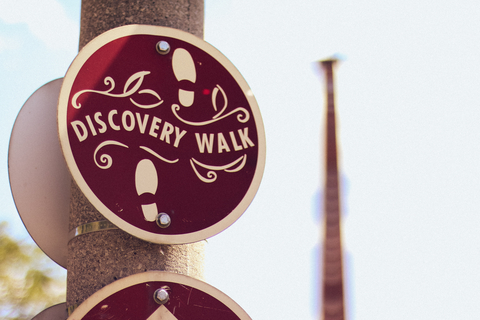Search vs. Discovery
When we’re at the library, there are generally two methods for finding books or other items in the collection. We can search the catalog for specific titles, authors, or subjects that interest us. Or, we can browse the shelves or scan suggested reading lists to see what looks interesting.
It’s the same with online research. Most of the time, we’re in search mode. We have a pretty good idea of what we’re looking for, and we generally assume it exists. We plan our search strategy, turn to the usual sources, scan results, refine our searches, and keep looking until we (hopefully) find what we need. In these situations, it pays to be focused.
And then there are situations when too much focus can get in the way. Sometimes it’s a good idea to take off the blinders, drop our biases, and move into discovery mode. This is the time for expanding options, learning something unexpected, exploring the unknown unknowns, and answering questions we forgot to ask. It can be a valuable part of the research.
Discovery takes a different kind of mindset than searching, though. It means not forcing search tools to return just what we need. It also involves keeping an open mind and getting used to a little bit of uncertainty instead of relying on the usual logic.
When a research project requires a different approach, here are few tricks I like to use for for moving from search to discovery:
Cast a wide net
Don’t use too many search terms right away, and scan results for clues about how to narrow the search. Rather than trying to limit your searches, think about ways to expand them, including using Google’s wildcard feature. You can also take advantage of some of the features that usually annoy, like search suggestions or links to related searches. And I’ve finally started to think of Google’s fuzzy searching as a feature, not a flaw.
Add some variety
Every source contains something you won’t find in the others. Use multiple search engines, including some lesser-known Google alternatives. Expand your list of trusted sources through social media and industry news, and try something different every so often. Take time to connect with vendors and test-drive new products, and ask colleagues for recommendations. Try some fee-based sources instead of just relying on what’s free.
Get creative
Use search tools for something other than their intended purpose. For example, try Google Images, then go to the sources for the images that relate to your subject. Since people love to post photos of their vacations and acquisitions, I’ve traced assets through image searches that weren’t found through regular web search. Look for connections to people and companies, and follow the trail. Throw some synonyms into your search, and try switching keyword order. Use Google’s proximity operator to go beyond simple keyword or phrase searching.
Don’t limit yourself to the limits of your search. It’s worth the extra time to discover what else is worth finding.
I’d love to hear any other tips you may have for information discovery, so please share!



